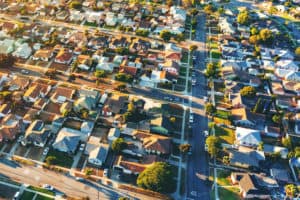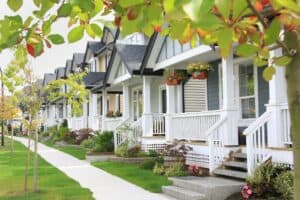Roads are an invisible staple of our lives, blending in with the hum of daily to-dos and errands. Unless, of course, the road you’re driving on needs asphalt repair. From potholes and traffic congestion to increased wear-and-tear on vehicles, poorly maintained roads are no laughing matter for those who rely on them for commutes. A 2018 study by TRIP, a transportation research nonprofit organization, showed that a lack of road maintenance cost an average of $1,863 per driver in the United States.
Bad roads are bad for community goodwill.
As a homeowner’s association, it’s unlikely that a poorly maintained road will cost you as much as what TRIP’s research showed. However, having a road that’s filled with potholes and badly in need of asphalt repair will decrease goodwill throughout your community.
Bad roads are a common topic on online HOA forums for community members, as you can see in the screenshots below:
This homeowner was frustrated by their HOA’s lack of action regarding the pothole-filled roads within their neighborhood. Other forum members reminded them to check their HOA’s governing documents, like articles of incorporation and CCRs, to check whether this was a legitimate responsibility of their HOA board. In any case, it’s clear to see the frustration that this homeowner was feeling toward their HOA due to the badly pitted road.
How To Fix Bad Roads & Repair Asphalt In HOA?
Okay, so it’s obvious that homeowners would want to drive on nice, smooth roads without teeth-rattling, vehicle-breaking potholes. But, how do you, as an HOA, go about fixing it? What kind of coating or sealant should you use?
Well, to start, it’s helpful to know about the different types of coatings so you can make an informed decision. Coatings are ranked in order of their durability, which is proportionate to the thickness and size of the rocks within your asphalt. In other words, the bigger the rocks, the thicker the seal that’s required to repair the asphalt.
The 5 Different Types Of Asphalt Coatings
| Type of Coating | Description | Use Case |
| Fog Seal or Seal Coat | This is a thin layer of asphalt that sometimes contains fine sand, but doesn’t contain aggregate. | This is only to be used as a sealer on roads with no cracks or after all cracks in the road have been filled. This type of coating is often used on driveways, playgrounds, or basketball courts. |
| Slurry I | This is a thicker asphalt coating that contains tiny aggregate (rocks are roughly ⅛”). | This type of asphalt coating is often used in parking lots and similar areas with low amounts of traffic. |
| Slurry II | In this asphalt coating, the rocks within the aggregate are slightly bigger, about ¼” and the coating is slightly thicker. | This asphalt coating type is often used on residential streets within cities, |
| Slurry III | This is the thickest type of slurry seal, with ⅜” aggregate rocks and ½” thickness to maintain hold on the aggregate. | As the thickest coating type, this is used to correct failing asphalt on streets with heavy amounts of traffic. The larger rocks provide better traction for high-speed vehicles and during inclement weather. |
| Chip Seal | Chip seals are the thickest coating and contain the largest rocks than other types discussed. | Chip seals are often done on rural county roads every 15 years or so. It’s best to use chip seals on very rough roads because it is very durable, but also very rough. |
Which asphalt coating is best for HOA road repair?
Our reserve studies generally recommend a Fog Seal or Slurry I type of asphalt coating for your road. If your HOA’s road is in fairly good condition with little to no cracks, then a Fog Seal coat would likely be your best option. If your streets have already started to crack, then a Slurry I type of asphalt coating would be preferable over a Fog Seal. This asphalt coating is best for most HOA roads since they typically have light traffic and slower speeds, as well as various children’s bikes and skateboards to consider.
Most HOA board members often choose a Slurry II or Slurry III because they are more durable, however, this can cause unnecessary roughness for homeowners. Just imagine kneeling to tie your shoe or walking barefoot to the mailbox and getting gouged by rocks – ouch! Rougher types of asphalt coatings can also cause kids who fall off of their bikes or skateboards to get road rash more easily.
Although a Fog Seal coat is preferred for a residential atmosphere like an HOA, it is less durable than other coatings. However, this is easily remedied by reapplying the fog seal every 4-5 years.
A Good Reserve Fund Makes HOA Road Repairs Easier
One of the biggest obstacles facing HOAs with bad roads is a lack of funds. As any HOA knows all too well, fixing a lousy road requires money that’s collected through dues or contributions from an HOA reserve fund.
If a reserve fund is underfunded, as is the case with many HOAs, repairs are paid through special assessments. There is a time and place for special assessments, but relying on them can lead to increased foreclosure rates and delinquency in HOA dues payments. At California Builder Services, our reserve study services can provide you with greater financial control and peace of mind. With a professional reserve fund study, you’ll be equipped for long-term success and a thriving community.







